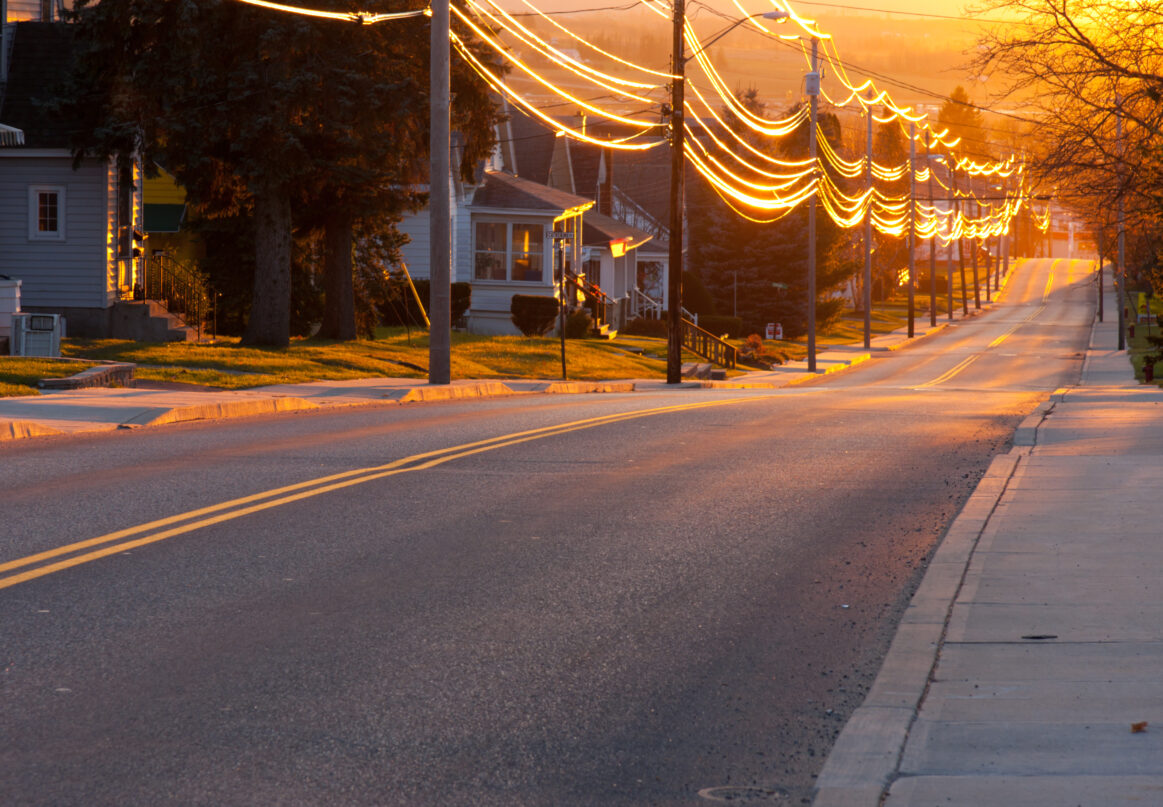
Kayla Johnson
By: Kayla Johnson
A number of historic practices in the United States—redlining and housing segregation; exclusion from the labor market and educational opportunities; and denial of voting rights, to name a few—have had lasting impact on Black and Brown communities’ ability to participate in the full breadth of wealth-building opportunities that should have been available to them. One lesser-known tactic employed in the Midwest, the North and the South, was the creation of sundown towns.
Sundown towns, also known as sunset towns, gray towns or sundowner towns, were municipalities in the United States that enforced policies to exclude African Americans and other minority groups from living in or even being present within town limits after dark. Sundown towns were often enforced through discriminatory housing covenants, threats, violence and intimidation tactics, according to Britannica. This phenomenon began in the late 19th century and continued into the 20th century.
Signs posted at various towns’ borders, warned African Americans to leave by sundown. These signs, along with intimidation and violence, were tools to maintain racially exclusive communities.
One of the most infamous examples is Anna, Illinois, where the town’s name was said to stand for “Ain’t No N****** Allowed.” In other cases, towns passed ordinances or used less overt means to ensure African Americans, immigrants and other minorities did not settle or stay long. This racial exclusion created a legacy of segregation that still lingers in various forms. Many former sundown towns remain all-white to this day.
Federal and state fair housing legislation of the 1960s outlawed discriminatory practices in housing, but, the social and economic impact of historic discrimination did not disappear. Many towns continued their exclusionary practices through less explicit means. In many cases, city charters and zoning laws continued to contribute to discriminatory practices.
- Segregated Communities: The legacy of sundown towns has contributed to deeply entrenched residential segregation in many parts of the United States. Known today as “zip code disparity” the segregation of the past still contributes to inequities in certain neighborhoods’ quality of education, employment opportunities and access to amenities. According to NAR’s Snapshot of Race and Homebuying, two-thirds of white people live in communities where the majority of residents are the same race as them—double the proportion of Black, Hispanic, and Asian people who live in racially homogenous communities.
- Property Values: Denial of public and private investment due to the racial composition of neighborhoods (also known as redlining) has historically influenced property values, often leading to undervaluation of properties in predominantly Black or minority communities and overvaluation in predominantly white communities. This dynamic perpetuates wealth disparities along racial lines.
- Zoning Laws and Redlining: While overt sundown policies are no longer legal, zoning and redlining practices that were often a direct result of segregation practices still cause disparity issues. These policies have been used to restrict minority access to certain neighborhoods and maintain racial homogeneity. For instance, zoning laws might limit the construction of affordable housing, effectively pricing out minority and low-income families in certain areas of a city or town. The Department of Justice’s Combatting Redlining initiative targets lenders who continue to serve only the white areas of communities, in violation of federal law.
- Real Estate Practices: Discriminatory practices in real estate, such as steering, where agents guide buyers toward or away from certain neighborhoods based on race, national origin, or another protected characteristic, continue to perpetuate segregation, even when the practices are unintentional. Additionally, racial bias in mortgage lending still exists, making it more challenging for minority families to purchase homes in certain areas.
- Community Dynamics: The history of exclusion creates psychological and social barriers that discourage minorities from moving into areas with a sundown town legacy. These towns often have reputations that persist, making them less attractive to minority buyers and renters.
- Economic Disparities: The economic fallout from generations of exclusionary practices contributes to the wealth gap between white and Black families. The Black homeownership rate of 43%—versus 72% for whites—is roughly the same as it was 50 years ago, according to National Association of REALTORS® data. Homeownership is a primary means of building wealth in the U.S., and the historical barriers to homeownership for African Americans have had lasting economic effects.
Addressing the legacy of sundown towns requires concerted efforts at multiple levels. This includes enforcing fair housing laws, promoting inclusive zoning policies and actively working to dismantle systemic racism within the real estate industry. Education and awareness are also crucial, as many people are unaware of the sundown town history in their communities.
As real estate professionals who abide by a code of ethics and are responsible for ensuring fair housing, acknowledging and understanding the history of sundown towns allow us to better address the practice’s ongoing impact on real estate and work toward a more equitable future.
The National Association of REALTORS® provides a number of trainings and resources to help members ensure they’re on the right track when it comes to understanding housing equity. They include:
Fairhaven: An interactive online fair housing simulation training inspired by real stories helps members identify, prevent, and address discriminatory practices in real estate.
Bias Override certificate course training and video series: Overcoming Barriers to Fair Housing is an NAR certificate course that helps real estate professionals interrupt stereotypical thinking so they can avoid fair housing pitfalls and provide equal professional service to every customer or client. Participants learn about the mind science of identity, study how implicit bias can result in fair housing violations and engage in interactive exercises to enhance communication skills and business relationships with clients of all backgrounds.
ACT! Fair Housing Action Plan: ACT!, NAR’s Fair Housing Action Plan, advocates for accountability, delivers innovative training to REALTORS®, and promotes culture change to serve an increasingly diverse nation. NAR provides resources to our members, brokerages and associations to implement ACT! locally.
Kayla Johnson, a licensed real estate agent and REALTOR® in Missouri and Illinois, operates within the Saint Louis metro area. Her real estate journey began with a strong belief in service with a passion. Kayla takes pride in advocating for Fair Housing and ensuring unbiased service for all. Find her on social media @kaylawiththekeys or email her at kaylajohnsonrealestate@outlook.com.

Comments 3
On a national basis of licensed Real Estate Agents What is the ratio of Black Agents to White Agents? Sorry to exclude any other race in this Quest! Retired Florida Agent
Very good information. This is something I never knew about. Thanks for sharing.
Incredible. Never knew of this specific chapter in real estate history, and or the origin and meaning of the term. TYVM for sharing.